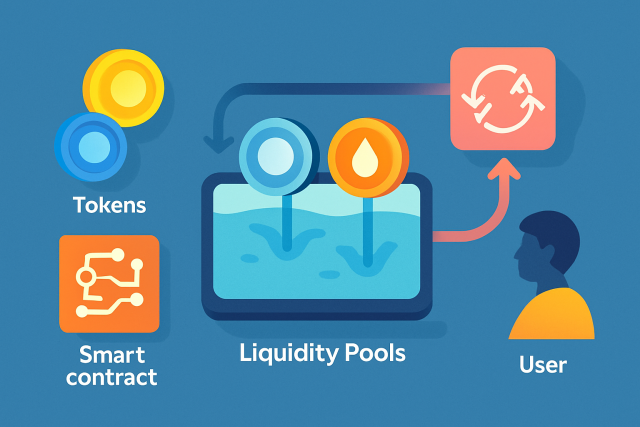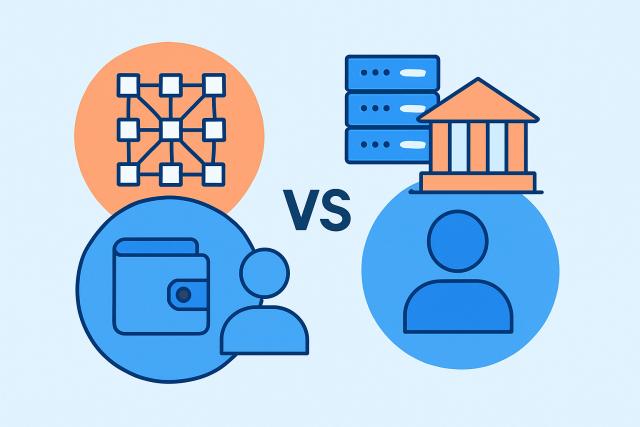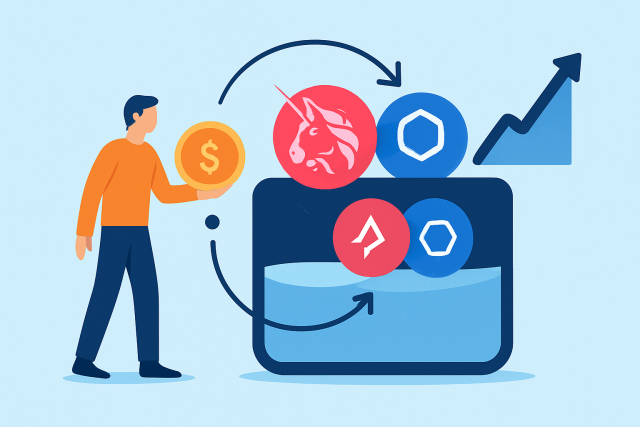How Sushiswap Handles Liquidity Pools?

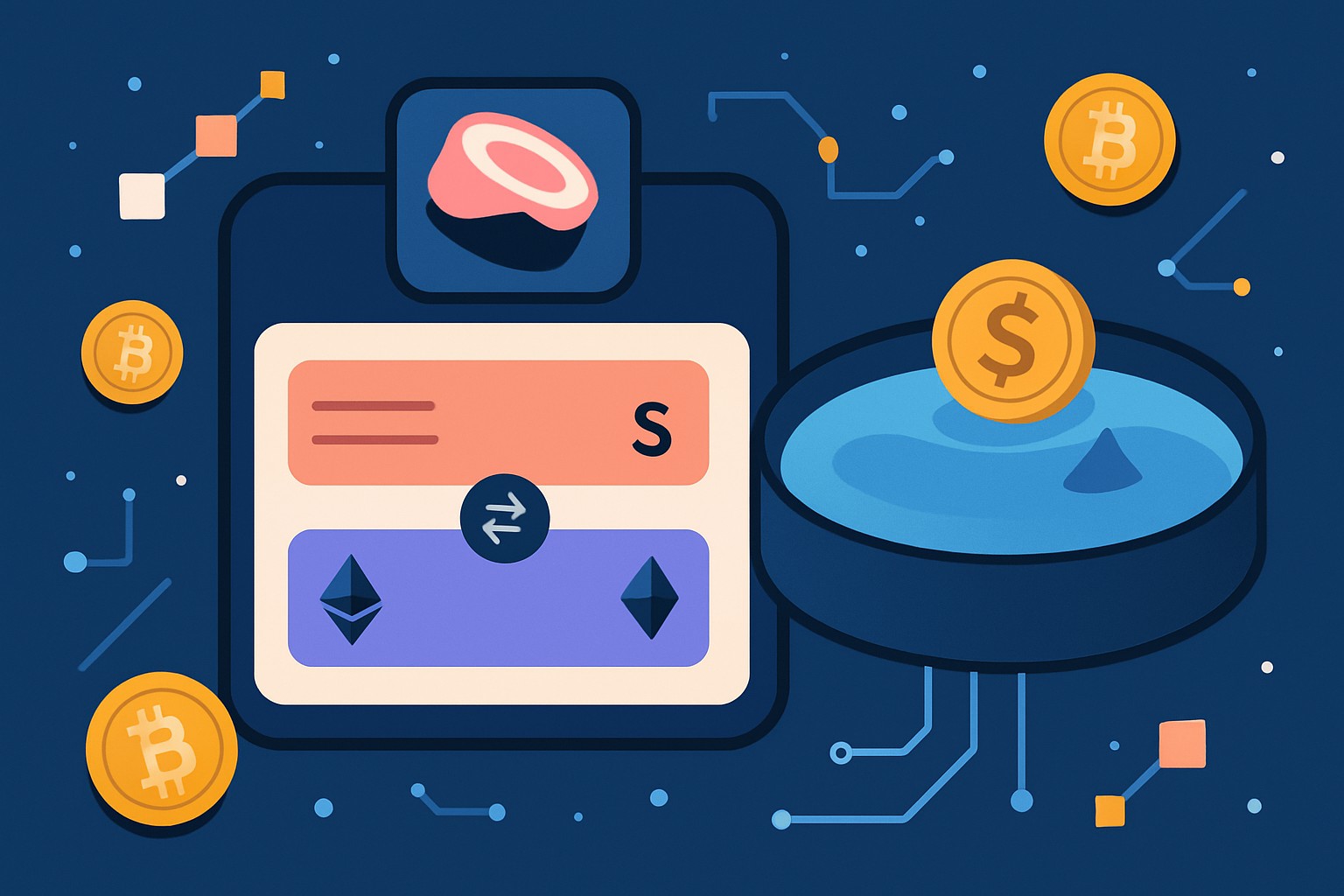
This article breaks down how Sushiswap's liquidity pools work and shows how to participate profitably while keeping a keen eye on the risks.
- Dive into how Sushiswap's liquidity pools tick using the AMM and that trusty constant product formula to keep token swaps running smoothly.
- Follow an easy step-by-step roadmap on providing liquidity and raking in fees as a Sushiswap liquidity provider—no rocket science involved.
- Discover ways to pump up your earnings with SUSHI token rewards and by staking your LP tokens to make your crypto work harder for you.
- Get the lowdown on potential pitfalls like impermanent loss and smart contract hiccups so you can protect your investment with eyes wide open.
Sushiswap is a pretty popular decentralized exchange that relies on liquidity pools to keep token swapping quick and hassle-free.
Liquidity pools sit at the heart of decentralized exchanges like Sushiswap, enabling users to trade tokens directly through smart contracts without any middlemen getting in the way. Getting a solid grasp of how Sushiswap’s liquidity pools tick can help both users and liquidity providers sharpen their trading strategies.
Taking a Closer Look at Sushiswap’s Liquidity Pools What’s Really Going On Under the Hood
Liquidity pools on Sushiswap stash pairs of tokens tucked away in smart contracts, enabling automated trading via an Automated Market Maker (AMM) system. The pool keeps its balance using the constant product formula (x * y = k), ensuring the product of token amounts stays steady to set the price.
- Paired Tokens: Each pool features a duo of cryptocurrencies like ETH and USDT that team up to create the trading pairs.
- Liquidity Providers: These are the people who pitch in equal amounts of both tokens to keep the trading wheels turning smoothly.
- Liquidity Tokens: LPs receive tokens that act as a little badge showing their slice of the pool’s ownership.
- AMM Algorithm: This clever mechanism uses the constant product formula to price things just right and handle trades seamlessly.
Smart contracts on Sushiswap act like self-driving machines that manage liquidity pools on their own. They securely hold the tokens you deposit and figure out swap prices. They even dole out fees without needing a middleman. This setup cuts down on risks like censorship or fraud while keeping everything transparent and running smoothly.
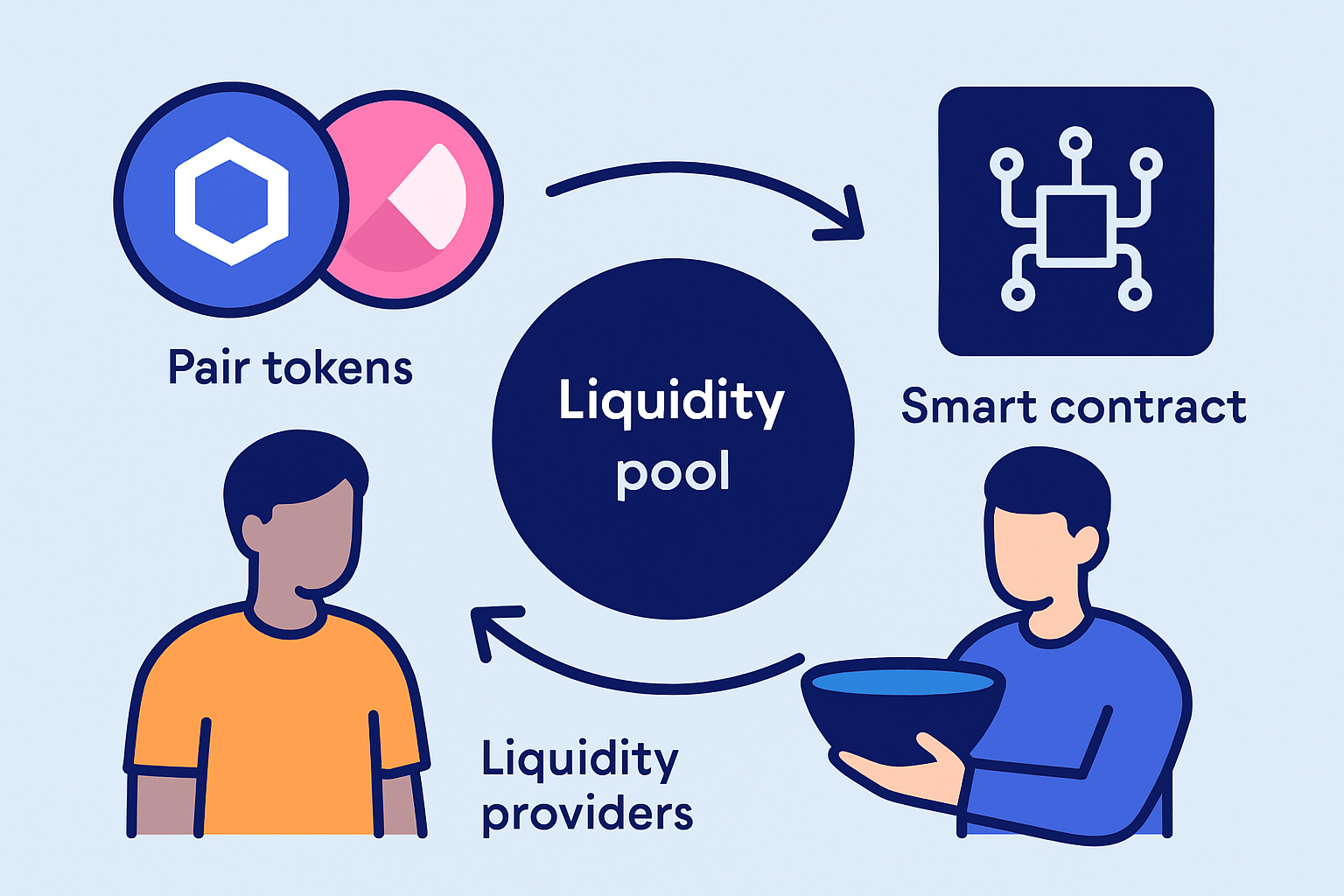
How You Can Jump In and Provide Liquidity on Sushiswap
Providing liquidity on Sushiswap is surprisingly straightforward and accessible. All you have to do is connect your crypto wallet and choose a token pair that catches your eye. Then deposit equal amounts of each token, approve the spending, and confirm the transaction.
Connect your go-to Web3 wallet—MetaMask is a popular pick—to the Sushiswap platform.
Swing by the "Pool" section and click on "Add Liquidity."
Choose the two tokens you want to supply, making sure they are roughly equal in value—balance is key here.
Give your wallet the green light to approve spending those tokens so your transaction can smoothly move forward.
Confirm the transaction to add your liquidity and then play the waiting game as the blockchain does its thing and confirms it.
When picking token pairs it’s usually smarter to stick with the popular ones that boast high trading volumes. This way you’re more likely to rake in better fee income. Also, a little heads-up: keeping your deposits balanced is vital to avoid pesky imbalances that can lead to impermanent loss or slimmer rewards.
How You Can Snag Rewards and Pocket Fees with Sushiswap Liquidity Pools
Liquidity providers on Sushiswap snag a slice of the fees racked up from trades happening in their pools.
- Trading Fees: Every swap comes with a 0.3% fee, which is fairly divvied up among liquidity providers—so everyone gets their fair share.
- SUSHI Token Incentives: Extra SUSHI tokens are handed out to sweeten the deal and encourage people to add liquidity.
- Staking LP Tokens: Users can stake their liquidity provider tokens in the MasterChef contract to rake in even more SUSHI tokens, kind of like planting seeds and watching them grow.
Fees quietly pile up over time and can be cashed out whenever liquidity is pulled. Yield farming programs let LPs toss their LP tokens into Sushiswap’s MasterChef contract, steadily racking up SUSHI rewards while still cashing in on trading fees.
How to Pull Your Liquidity Out of Sushiswap Pools Without a Hitch
When LPs decide it’s time to pull out their liquidity, they simply redeem their liquidity tokens and get back their share of the pool’s underlying tokens—along with any fees and rewards they’ve racked up along the way.
Kick things off by connecting your wallet to Sushiswap and navigating over to the "Pool" section.
Take a moment to spot your active liquidity positions and see exactly which pools you’ve dipped into.
Decide how much liquidity you want to pull out.
Give the withdrawal transaction your thumbs-up by approving it through your wallet.
And hey, don’t forget to grab any waiting SUSHI rewards by unstaking or harvesting from the MasterChef staking contract before you wrap up.
It is usually a smart move to time your withdrawals just right to keep impermanent loss at bay—typically when price swings are on the calmer side.
Risks and Best Practices for Using Sushiswap Liquidity Pools
Diving into Sushiswap liquidity pools can be a rewarding adventure, but it’s not without its twists and turns. While the potential for earning fees and rewards is certainly tempting, it’s important to roll up your sleeves and understand the risks lurking beneath the surface. From impermanent loss to smart contract vulnerabilities, there’s a lot to keep an eye on. Luckily, with some savvy moves and a pinch of caution, you can navigate these waters more confidently. Let us explore the key risks that every liquidity provider should watch out for and the best practices that can help keep your assets safer and your experience smoother—because, trust me, a little knowledge goes a long way in this game.
Sushiswap offers some appealing opportunities but it’s not without risks such as impermanent loss and smart contract bugs. There is also unpredictable price slippage, rug pulls, and changing gas fees that can sneak up on you.
- Impermanent Loss happens when the ratio of token prices changes and can leave your liquidity position worth less than if you would simply held the tokens. It is like watching your investment do a dance you didn’t sign up for.
- Smart Contract Risk is the possibility of bugs or security holes in the code that bad actors might exploit. You hope your code is bulletproof but sometimes it’s more like swiss cheese.
- Price Slippage sneaks in and raises costs, especially with bigger trades or tokens that don’t see much action. It’s the market’s way of reminding you liquidity isn’t always guaranteed.
- Rug Pulls are nasty tricks where project teams suddenly cash out huge token amounts. It’s the crypto equivalent of a disappearing act and nobody likes being left holding the bag.
- Gas Fees on Ethereum can spike unexpectedly, turning a cheap small transaction into a wallet-draining ordeal. It’s a reminder that timing your moves here is as important as the moves themselves.
When using SushiSwap, you can dodge some of these risks by spreading your investments across multiple pools and focusing on stablecoin pairs to keep things steady. Make it a habit to regularly check on how those pools are performing and any updates to the protocol.
"Before you dive headfirst into providing liquidity on Sushiswap, it is really important to have a clear grasp of the risks involved and keep your wits about you. In my experience, making well-informed choices is the secret sauce for long-term success in the wild world of decentralized finance." – DeFi Expert
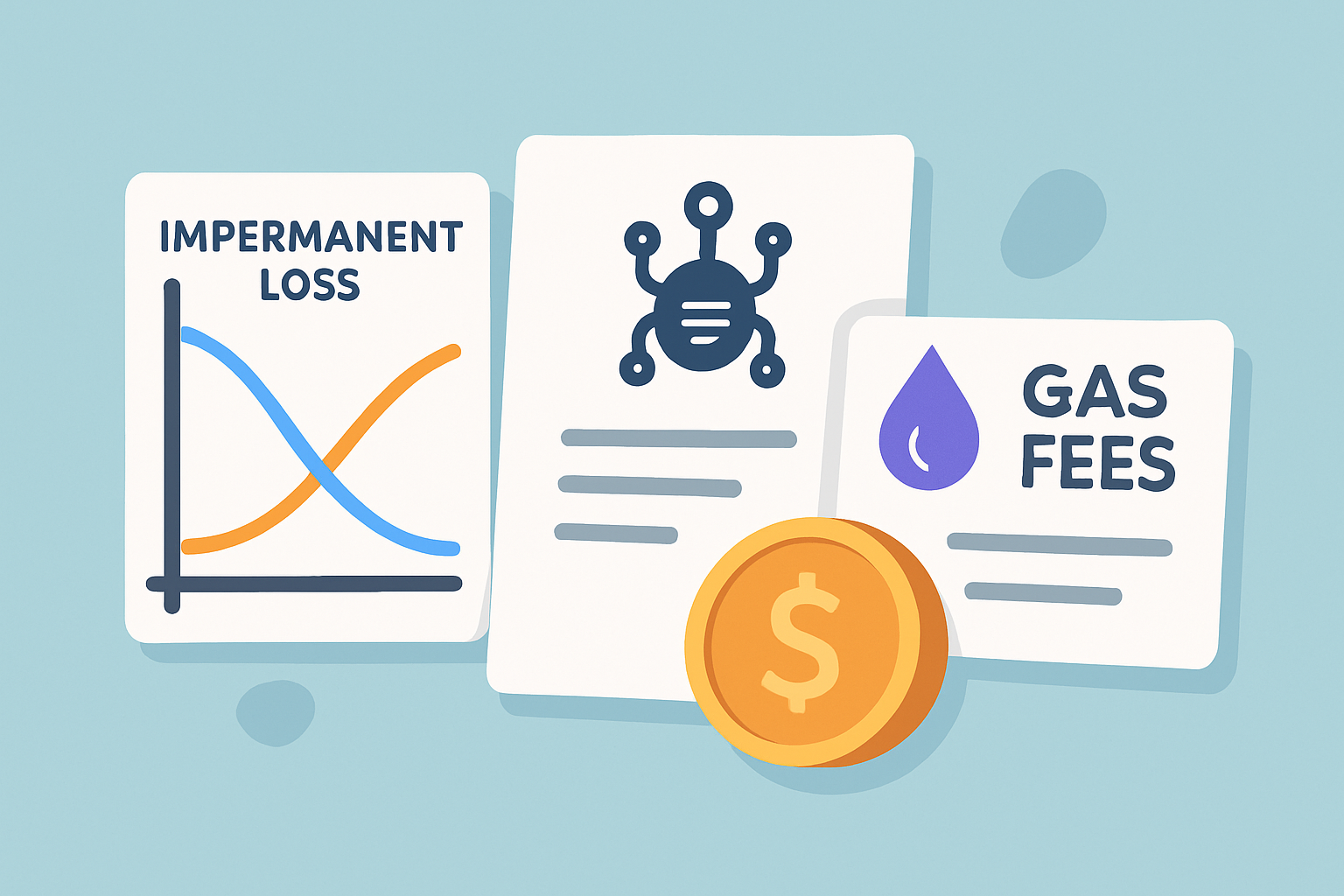
Frequently Asked Questions
How does Sushiswap determine the price of tokens in a liquidity pool?
Sushiswap runs on an Automated Market Maker (AMM) model using the trusty constant product formula (x * y = k). The price of tokens boils down to their ratio in the pool. When you buy one token, its price usually inches up compared to the other. Selling does the opposite. This clever trick helps keep liquidity flowing smoothly and pricing fair without the fuss of order books.
What is impermanent loss, and how can I minimize it on Sushiswap?
Impermanent loss shows up when the price ratio between tokens in your pool changes making your deposit less valuable than if you would just held the tokens separately. To keep this risk in check, stick with stablecoin pairs like USDC/USDT or pairs that see heavy traffic but don’t swing wildly. Also, it pays to watch market trends closely before pulling your funds out because timing can be everything here.
How do I earn rewards as a liquidity provider on Sushiswap?
As a liquidity provider, you pocket 0.3% of the trading fees from swaps in your pool—split based on your share. On top of that, you can stake your LP tokens in Sushiswap’s MasterChef contract to farm SUSHI tokens. So you basically cash in on both fees and some tasty bonus incentives.
Are there risks to providing liquidity on Sushiswap?
Absolutely, a few risks come with the territory. We’re talking impermanent loss, potential smart contract bugs, rug pulls, and painful gas fees. You can reduce some of these risks by doing your homework on token pairs, spreading your investments across different pools, and staying alert for the latest security audits on the protocol.
Can I withdraw my liquidity from Sushiswap anytime?
You can redeem your LP tokens and pull out your liquidity whenever you want. That said, timing matters—it’s usually smart to avoid periods when gas fees are sky-high and to think about price stability to avoid unnecessary impermanent loss. Don’t forget to claim any pending SUSHI rewards before you unstake or you might leave some dollars on the table.
Do I need technical skills to provide liquidity on Sushiswap?
No rocket science here—just a Web3 wallet like MetaMask, a token pair you like, and equal amounts to deposit. Having a basic understanding of things like AMMs and impermanent loss can help you make savvy choices and squeeze more value from your investment.



